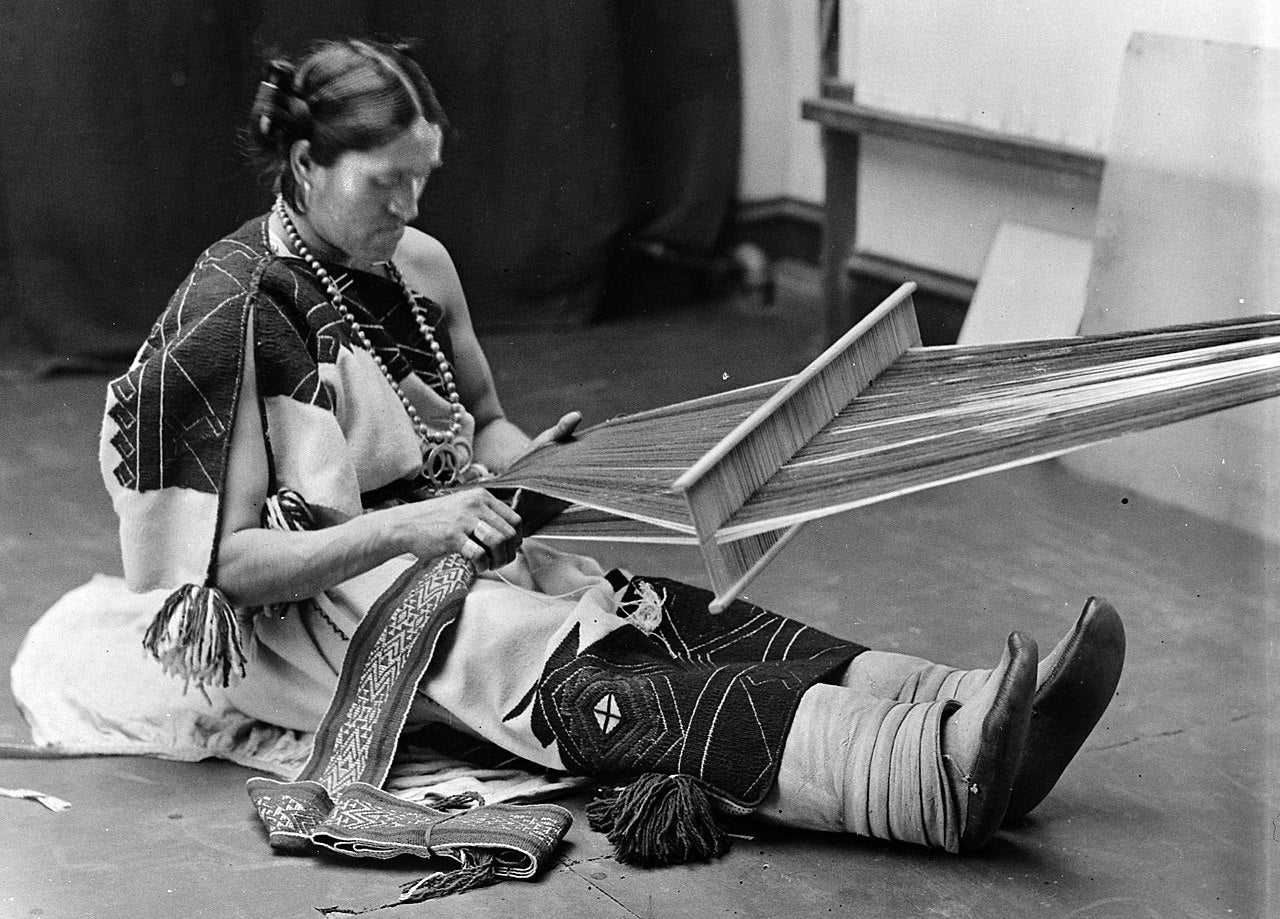
The Native American peoples have incredibly diverse cultural customs, traditions, and beliefs depending on their Tribal affiliations.
Historically noted amongst many (but not all) tribes across North America was the recognition and reverence of people who did not conform to traditional gender roles.
Strict male-female gender roles are a Euro-western construct based primarily on religious laws. Native men and women did not traditionally need to abide by strict gender roles and expression to be considered normal members of their tribe. Individuals were, rather, valued simply for their contribution to their tribe; children’s clothing was gender-neutral, and no judgement was placed on how any person expressed themselves in terms of gender expression or, for that matter, their sexuality.
Modern vernacular refers to gender non-conforming Native Americans as “Two Spirit” - a universal term first coined only around thirty years ago. This is not a term used traditionally; rather, many Native American tribal cultures have their own Native language terms for non-gender-conforming individuals.
Before European Colonisation…
Before colonization, many Native American tribes openly recognized and embraced gender fluidity, and there were more than two genders recognised within a lot of these communities. Anthropologists have stated that, historically, the presence of highly esteemed male bodied “Two Spirits” was fundamental in most tribes.
In some Native societies, there were considered to be up to five “normal” genders: Male, Female, feminine men (Two Spirit Male), masculine women (Two Spirit Female), and transgendered individuals.
People who embodied “Two Spirit” fluid gender roles were accepted and revered as being especially gifted with knowledge, intellect, artistic skill, insight, compassion, and an ability to uniquely understand opposing male and female sides.
Historical evidence suggests that “Two Spirit” people were accepted and revered in more than 110 tribes, including the Cree, Aleut, Lakota, Ojibwe, Iroquois, Cherokee, and many others.
In the Southwest, the Navajo traditionally had four genders – feminine woman, masculine woman, feminine man, masculine man. They, for example, recognised a “feminine man” as being both a man and a woman, and called them “Nadleehi” – “One who is Transformed” or “One who Changes”.
The Zuni had “Lhamana”, biological men who took on women’s social and ceremonial roles. They dressed in a combination of men’s and women’s clothing but also undertook work that required endurance and strength, like hunting large prey. They also often excelled in pottery and weaving and often served as mediators.
(Although not Native American, Native Hawaiian culture also revered people who possessed both male and female spirits; they were called “Mahu”. This open acceptance of gender diversity was also prevalent in other indigenous societies, from Myanmar to India, Egypt to Samoa, and further afield.)
It is also important to note that the recognition and reverence of the Two-Spirit people were not universal amongst all Native American tribes.
After European Arrival…
It was only with the arrival of Spanish conquistadors and other European settlers that attitudes to the openness of many Native American tribes in terms of sexuality and gender altered, thanks in great part to the rigid Christian standards that considered any form of gender diversity as sacrilegious.
Early French explorers referred to “Two Spirit” individuals as “berdache”. A berdache was described as a (usually male) person who was anatomically “normal” but who assumed the clothing, behaviour, and occupations of the opposite sex as a way to effect a change in their gender status. It was noted at the time that they generally sought not to become the opposite gender, but to inhabit a comfortable, intermediate status. The term was (and remains) repugnant to Native peoples as a derogatory umbrella descriptor for any person not conforming to Western norms of gender and sexuality.
Notable Two Spirit People in History
Osh Tisch was a renowned Lakota warrior. Born male, his name translates as “Finds Them and Kills Them”. He married a female but also dressed and lived most of his daily life as a woman. He demonstrated outstanding bravery on the battlefield in the Battle of Rosebud Creek in 1876.
We’Wha was a biologically male Zuni person who had a female spirit. Born in 1849 and living until 1896, We’Wha was a renowned weaver and potter, as well as a cultural ambassador, educator, and contact point between the Zuni (and other Native Americans) and soldiers, missionaries, teachers, and anthropologists. We’Wha met with President Grover Cleveland in Washington DC in 1886. The most famous lhamana, We’Wha was described by an anthropologist of the time as living for both male and female tribal roles, dressing periodically both as a man and as a woman, being the “most intelligent person in the pueblo”, of strong character, and performing male judicial and ceremonial functions as well as female duties including gardening and laundry. We’Wha was a tribe member who was loved by all but whose wrath was also greatly feared.
At Indian Traders, we are committed to supporting local Native Hopi, Zuni, and Navajo artisans and their communities, bringing you their stunning original and genuine Native American jewelry. Furthermore, the stories and history of Native Americans and their culture are fascinating; they must be shared lest they be lost – and we feel honored to share some of these in our blog articles.
